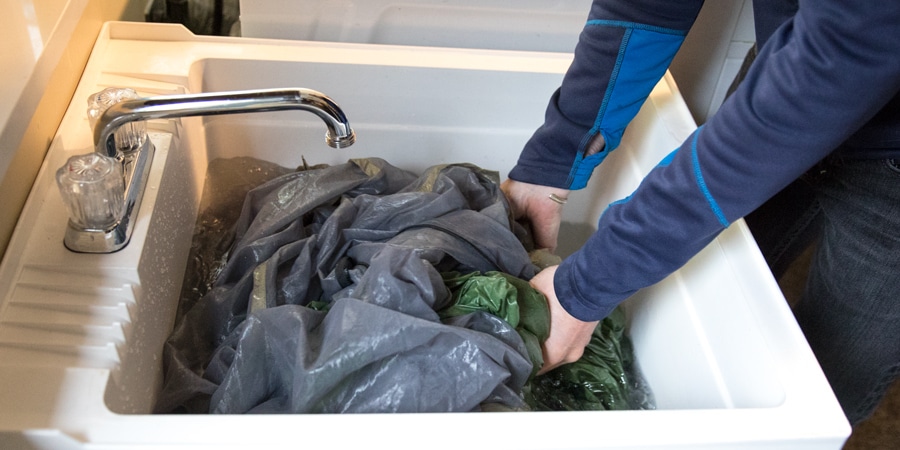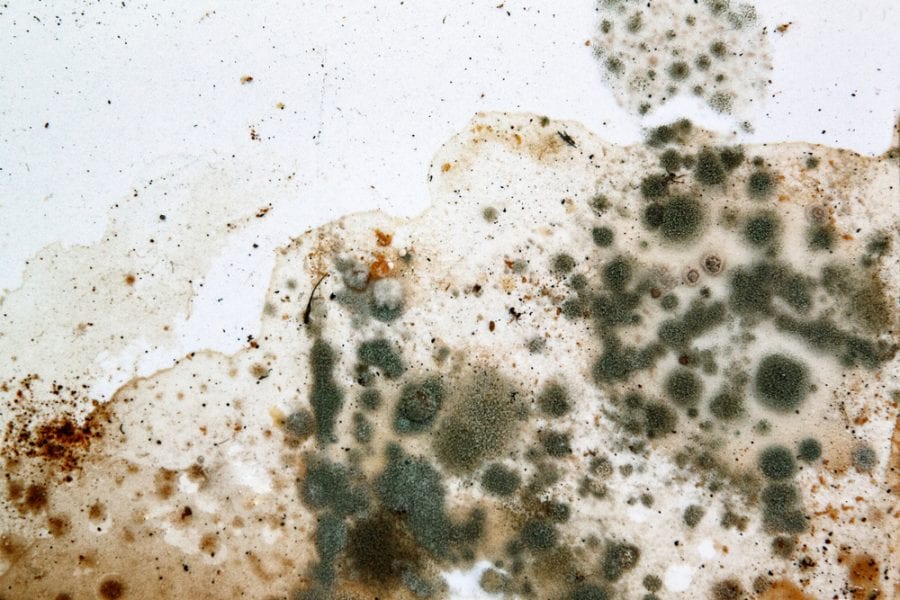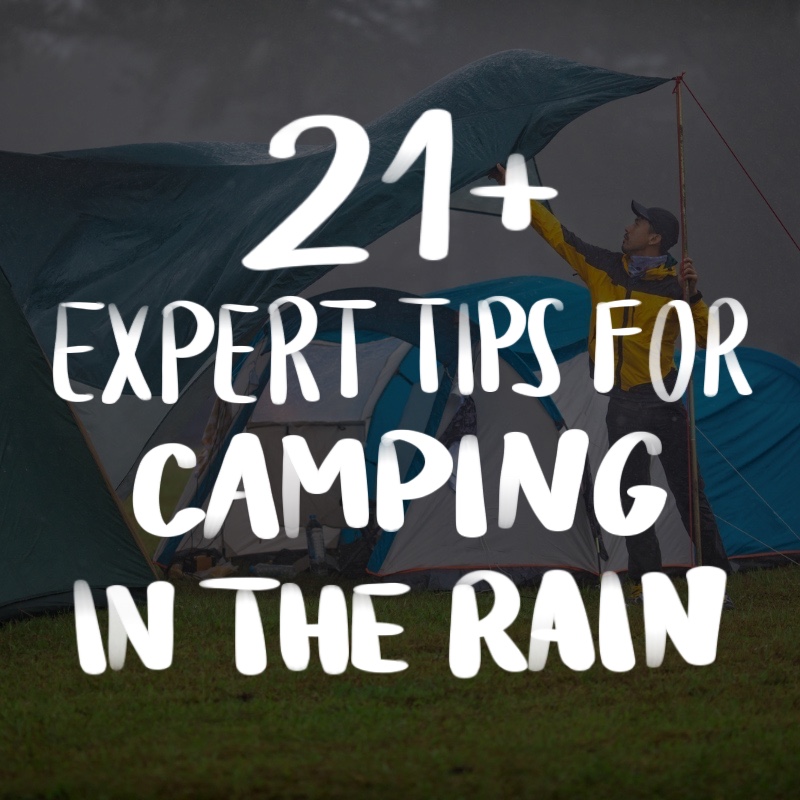
Camping is an exciting outdoor activity, but it comes with the responsibility of taking care of your tent.
Why?
I will begin with the situation that happened to my boyfriend and me.
We didn’t go camping during the winter, so we put the tent in the storage room in a damp place where mold had formed. Since cleaning the tent with mold was challenging, we scratched our heads.
That’s not the only thing that happened to us. This time we camped in the rain. Our tent was dirty because of the mud on the ground.
Even though we know this happens, we need to be more skilled at cleaning the tent. But, after the second time, we were real masters in this business. Therefore, we are here for you to impart our knowledge.
This guide will explain how to clean a tent, including tips and tricks to make the process easier and more efficient.
Keep reading and prepare for cleaning!
Table of Contents
What Should You Keep in Mind When Cleaning a Tent?

First, it’s better to clean the tent before a camping trip in the backyard of your house. If you don’t have one, you should clean it as soon as you arrive at the campsite so that it is ready for use and comfortable to stay in.
The two main things you should keep in mind when you decide to clean a tent are:
- Bad weather – especially in autumn and winter, can affect the cleaning process. The tent will be dirtier and will dry more slowly. In the summer, it won’t get much dirt. If you clean and wash the tent, it will dry faster. You don’t have to worry about that season if you have a canopy.
- Cleaning location – It’s preferable to clean the tent in a place with no wind or rain. That way, you will have easier access to the tent interior and reduce the risk of possible damage if it rains or snows.
Why Should You Clean a Tent?
Cleaning your tent means cleaning your living space as you do in your house.
However, in nature, it’s different because certain natural factors can affect the appearance and functionality of your tent.
You should clean the tent in these situations:
- If it has been in the storage room of your house for a long time and has accumulated a lot of dirt
- If the material of your tent collects moisture
- After camping at the sea since the tent can be dirty because of the sand
- After prolonged exposure to campfire smoke
- After prolonged exposure to direct sunlight, UV rays act like an oven, absorbing dirt into the tent fabric.
Also, rain, snow, insects, and unsuitable ground can create mold if you take care of your tent infrequently. So, what do you need to clean a tent? Pay close attention below.
What Do You Need To Clean a Tent?
You can’t clean an entire tent in a few minutes. You must allocate time, even several hours, for effective cleaning and ensure what tools and materials you may use.
Here are some of the outdoor gear you must use when you clean a tent:
- Garden hose
- Pressure washer
- Soft-bristled brush
- Clothesline
- Damp cloth
- Drying rack
- Scissors
- Paintbrush
Here are some materials you must use when you clean a tent:
- Warm water
- Dishwashing liquid
- Mild soap
- Microfiber cloth
- Protective mask
- Distilled white vinegar
- Isopropyl alcohol
- Silicone-based seam sealer
- Polyurethane coating
- Repair patches for fabric
- Mesh bag
- Duct tape or silicone sealant
- Needle
- Sponge
- Waterproofing spray bottle
Now that you know what to use, let’s explain the essential part of the entire process – cleaning the tent.
A camping tent can get dirty quickly, so you must keep it clean to make your stay as comfortable as possible.
We’ll explain the steps you must take if you wonder how to clean a tent on camping trips.
First, let’s see how to clean the outside of the tent.
How To Clean A Tent – Exterior

Stains mainly occur on the outside of the tents. To effectively remove all stains, follow the steps below.
Setting Up a Tent
Place the tent properly on an open and flat surface or in a well-ventilated area where you can clean it more easily. Be careful not to set the tent loosely. If the tent is wet, wipe it with a cloth.
And if you’re worried about the bottom of the tents getting dirty, you can place your tent on a tarp to be off the ground.
Cleaning or Vacuuming The Tent
You can remove the stains with a broom or vacuum cleaner. If you use a broom, have a bucket or staff sack on the side where you will put the garbage.
Since you are out in nature, you will have dust and debris, such as leaves and sticks.
Don’t forget to clean all the corners where there may be the most dirt
Shaking The Tent
Dirt can get stuck outside the tents, so shake it if there is no need for more detailed cleaning. Grab the corners to do this as efficiently as possible, then do it a few times to ensure everything comes out.
You will easily remove dry dirt; if it is wet, proceed to the following cleaning methods.
Mixing Mild Soap With Warm Water
Use mild dish soap or tent cleaner that matches the tent’s fabric.
Next, prepare a bowl of warm water and add soap to make a cleaning solution.
Cleaning Dirt With a Soft Cloth or Sponge
You risk damaging the tent and the waterproof coating using a rough cloth or a strong cleaner such as an abrasive.
Take a soft cloth or sponge, soak it in water, and scrub the spots or stains on the tent.
Cleaning The Tent Fly With a Toothbrush
The procedure is the same as with the cloth. Dip a soft toothbrush in water and start scrubbing.
These areas are the easiest to clean with this type of tool. When the brush gets dirty, rinse it and repeat the process.
How To Clean a Tent – Interior
Although it is harder for dirt to reach the inside of the tent compared to the outside, it can be dirtier than you imagine. It is easy to remove the dirt. If you need to know what the tent maintenance inside looks like, follow the following steps.
Turn The Tent Upside Down
First, you will turn the tent fabric to the other side and open the tent flies. Also, place the tent in a dry, open place for easy access.
Shaking The Tent
Like the tent’s exterior, shake it a few minutes to remove any stains from spending a few days in nature.
The tent can get wet and accumulate leaves and other debris. So, shake it a few times, and if all the dirt doesn’t come out, you need to wash and scrub it. After eating, crumbs and leftover food can also remain.
Soaking The Tent In Soapy Water
You should soak the tent in soapy water for about 20 minutes, but be careful not to leave it too long so as not to damage the waterproof coatings of your tent. Seam sealant is applied to waterproof seams.
You can read exactly how long the tent should be in the water on the label of the tent cleaner. Remember, don’t use detergent for clothes as it can stain the tent material.
Rinsing The Tent With Warm Water
After washing the tent with soapy water and scrubbing it, you need to pour warm water over it and rinse it well so that no soapy water remains.
You can use a water hose as an effective flushing agent.
Hang The Tent To Dry
If it’s sunny, you can place wet tents in an open area to completely dry. If you have one, you can hang it on a clothesline.
The sun will make it dry faster, but be careful not to leave the tent in the sun for too long, or it will fade. So, it’s better to put the tent in a shaded outdoor spot.
Before you put your tent away, it must be scorched. Otherwise, mold can form, and you must clean the tent again. So, allow the tent to air dry completely before packing it for storage.
Clean The Poles With a Soapy Cloth
If the poles are dirty, dip a clean and damp cloth in soapy water and wipe the tent poles to remove the stains. Then wipe them with a clean cloth.
How to Clean a Tent With Mold And Mildew?

Mold and mildew often occur in humid climates. It will create a funky smell and attract insects. If you react in time, your tent will be cleaner. If you accidentally put the tent to stay in a damp place for a long time, it will have mold and mildew.
Don’t worry! You don’t need to buy a new tent. You can solve the problem of the moldy tent yourself with a few effective methods.
For the tent floor, doors, seams, and tent flap, you will need a soft-bristled brush and a large bucket of water with a mild detergent or soap to clean mold stains.
Next, you will need a soft cloth or sponge to clean the dirt. If you tend a canvas tent, you will need a can of waterproofing spray bottles, and you can use a stiff brush, but not a wire brush.
You certainly don’t want a moldy tent, so here are tips on how to prevent mold and mildew:
- Place the tent in an open area. Allow the tent to air out for a few hours.
- Mix one tablespoon of mild dishwashing detergent with 1 liter of hot water
- Apply the cleaning solution to the parts of the tent’s floor, the tent doors, tent’s seams with mold or mildew using a soft cloth or sponge
- Spray the cleaner all over the mold and then let it sit for up to an hour
- Start scrubbing the mold and decay of the tent
- After scrubbing, rinse the soap residue with a garden hose or a bucket of water, and let the tent dry completely.
- Once the tent is dry, apply a waterproofing spray to prevent further build-up of mold and mildew.
You will notice additional methods if you want to prevent mold.
How To Clean a Tent With Vinegar?
You can make a mixture that removes mold and even mold spores quickly and effectively, known as the vinegar method.
It’s an inexpensive and environmentally friendly way to get rid of mold. It shouldn’t damage your tent with mold, but be careful not to use white vinegar in large quantities. As a last resort, test small tent sections and see how it reacts.
You must fill a spray bottle with a vinegar-cleaning solution and clean water and let the vinegar sit for about an hour.
Although the vinegar has an unpleasant smell, it will disappear quickly.
Spray the mold spots, and the acid will start to eat away at the mold.
Depending on the materials of the tents, vinegar can produce different effects. For example, it will be harder to clean canvas tents than synthetic tents. Also, not every tent materials resist moisture.
Don’t use bleach to remove mold; it can discolor tent fabric and waterproof coating.
Cleaning The Tent With Lemon Juice
Mold is one of the worst things that can destroy your tent. If your tent is light-colored, it’s worse. You can make your cleaning mold with lemon juice.
You will need bleaching, but you should take care of the tent fabric. Various bleaches, such as chlorine bleach and other harsh chemicals, can seriously damage tents, so you have to be careful.
For example, some chlorine-free bleaches may be less harmful to the tent fabric. However, it’s best to try a natural cleaner, such as lemon juice, that won’t bleach the tent fabric too much.
Soak the dirty area, scrub, and wait for the lemon juice to clean the stains safely.
FAQ
What is the easiest way to wash a tent?
The easiest way to wash a tent is to set it up in a backyard or nearby park and use a mild detergent mixed with water to scrub away dirt and grime gently. Use a soft-bristled brush to avoid damaging the tent material.
Rinse the tent thoroughly with a hose or bucket of clean water and allow it to air dry before storing it.
Avoid using a washing machine or dryer if possible, as the heat and agitation can damage the tent.
Can you use Dawn dish soap on a tent?
Yes, you can use Dawn dish soap on a tent. It is a mild detergent that cleans dirt and grime without damaging the tent material. To use it, mix a small amount of Dawn in a bucket of warm water and use a soft-bristled brush to scrub the tent gently. Rinse the tent thoroughly with clean water and allow it to air dry before storing it.
Remember that some tents are made of more delicate materials, so it’s always a good idea to check the care instructions before using any cleaning products.
How to clean a canvas tent?
1. First, set up the tent and remove debris or loose dirt using a soft brush or a broom.
2. Mix a mild detergent, such as Dawn dish soap, in a bucket of warm water.
3. Using a soft-bristled brush, gently scrub the tent with soapy water, paying extra attention to particularly dirty or stained areas.
4. Rinse the tent thoroughly with a hose or bucket of clean water to remove any remaining soap residue.
5. Allow the tent to air dry completely before storing it. Don’t use a washing machine or dryer, as the heat and agitation can damage the tent.
6. You shouldn’t clean canvas tents with bleach, solvents, or harsh chemicals.
7. Always check the care instructions of the tent before cleaning; some manufacturers may have specific recommendations.
8. If the tent is filthy or has mold, mildew, or odors, you may want to hire a professional to clean it, as these issues can be challenging to remove with traditional cleaning methods.
Clean Your Tent And Enjoy Your Stay In Nature!
Even though there seems to be no solution at first glance, cleaning your tent couldn’t be easier. We hope you learned in this article how to clean a tent in just a few steps and have it ready for use.
Be patient, take the time to clean the tent effectively, and check out our blog post on 25 super useful camping tips that will save your adventure!
What do you think about this article? Feel free to write your thoughts, experience, and some fun stories in the comments. We would like to hear from you! Thank you
-
Milica is a nature lover and explorer of the great outdoors. She is always up for the challenge, whether camping, hiking, kayaking, or cycling. For her, exploring nature is a great way to connect with the environment around us and meet new people along the way. She always looks for the next journey and loves sharing her experiences with others. Besides, she loves writing and thus creates exciting stories based on personal experience.
View all posts





